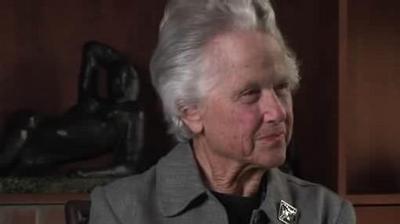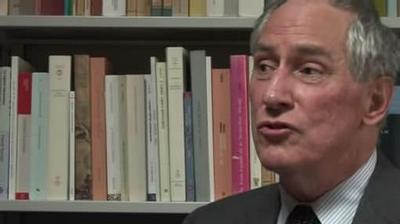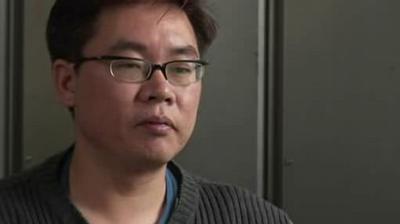
In this first clip, Eisenstein describes the conditions of scarcity that characterized the book as artifact in the age of the scribe. Thereafter she describes the printed word's role in the reformation, and how this served to transform the Catholic church's view of print - towards which it had initially been positive - and sparked attempts to control its influence.
Please note that this is the only clip not yet authorized for re-use, but only distribution. Contact us for any further information.

Darnton has spent much of his career investigating the system of information control in eighteenth century France prior to the revolution of 1789. This research brought him to Neuchatel in Switzerland, one of the important centers of printing of the period, where materials forbidden in France were published to be later smuggled into the country and distributed through sophisticated networks.

Rheingold recounts how the development of communication technology has removed the power top transmit messages from a tiny elite, and had been a force for democratization. Following Benkler's idea of peer production he explains how the diffusion of many-to-many communication technologies enables new forms of collective action.

Martin Luther's theses launching the Reformation can be considered the first object of p2p distribution; spread beyond their original audience without authorization. Vaidhyanathan describes how states quickly moved to control information flows through licensing and other methods. Communication technologies change the way in which identity is lived, deterritorializing the subject from their local physical environment,and open up new visions of the possible.

Even before the birth of copyright laws in the strict sense, there already existed systems for the control over information reproduction which gave the owners of copying equipment a stake in cultural production. Moglen sketches the history of copyright law as a form of industrial regulation, and analyses how the changes in technology have thrown the roles created by those laws into crisis. Where once control resided in the physical artefact itself, digitalization has forced the law to step in and control access rather than just copying.

Baldwin was sceptical at the proposition that the current upheaval in the media industry, sparked by digitalization, could lead to a more heterogeneous and decentralized media environment. His doubts are born from experience of previous technological changes, such as home video. His view is that these innovations are quickly absorbed by the media conglomerates and he argues that power is in fact being consolidated rather than broken up. His view is quite dystopian but provides an important counter to technological messianism. For him, critical agency is the necessary key to change, which tools can't provide.

Von Lohmann chronicles the legal actions which have met new media technologies for more than a century, demonstrating that neither current conflicts, nor the extreme language, are unprecedented. He goes on to outline how the lawmaking process in the United States structurally provides incumbent industry players with an advantage. Lastly he challenges the notion that Digital Rights Management (DRM) systems will provide an antidote to the copyright owners' woes.

Piracy is a term used to stigmatize but Liang contextualizes the term as an instance in the long history of 'commoning', where people organze themselves outside of hierarchy and property. He identifies the real threat to industry in the chance they may lose control of production as well as reproduction, as users become aware of their own potential. Finally, he underlines how in previous areas prohibited works were surpressed and destroyed, but argues that nowadays these works can survive in private digital so the past of loss and erosion need not repeat itself.